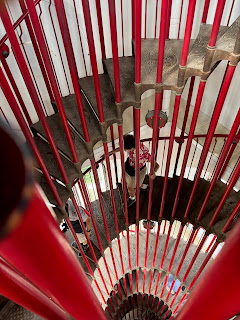Day 21: Epilogue
Dave and Molly flew off in the middle of the night, leaving the last 3 couples to bid farewell to Mario. He was truly exceptional. Always with a smile on his face and heartfelt concern for his charges. We will miss him.
A few final thoughts about Croatia.
1. Very friendly people. people here seem genuinely friendly from the hotel managers to the maids to the waiters. We did not come across anyone who was not kind and helpful.
2. CLEAN. Croatia was an exceptionally clean country. No graffitti (can't be said about Slovenia), no litter, and immaculate bathrooms (every on of them that we tested including por-o-potties).
3. Extremely scenic.
4. Gorgeous weather. We had 21 straight days of perfect weather.
5. If you are planning a trip here, I would certainly recommend utilizing the services of Ivana Bosancic
Private Tours Croatia Ltd.
Croatia Phone: +385 21 510 800
Mobile: +385 91 604 3197
She planned a wonderful trip for us based on our requests, was very accessible, and extremely responsive to some last minute changes that we asked for. Her guides were exceptional and our driver, Mario, a real pleasure to spend 2 week with.
6. If you want to sail, charter a monohull. Catamarans don't sail well. They do have their place. Our cat allowed for 4 couples with private heads, critical for us older folks. Event though we did bnot get much sailing in, our floating hotel was very comfortable and allowed us a great time on the water.
.jpeg)

































%20copy.jpg)




%20copy.jpg)


















